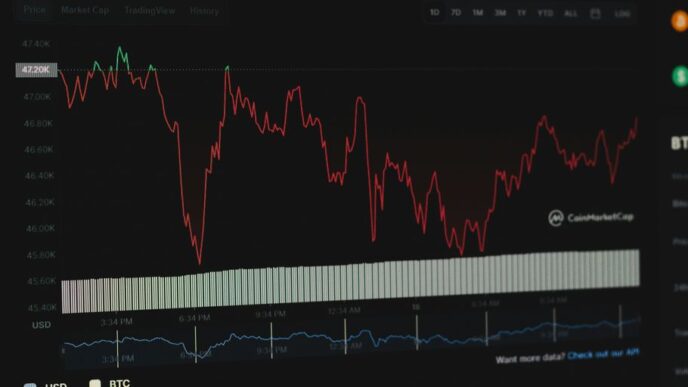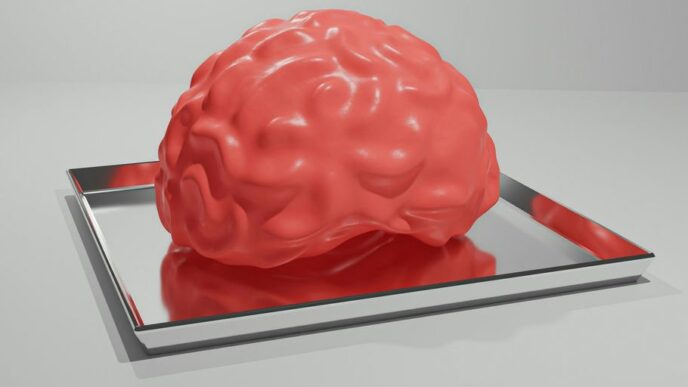Artificial Intelligence, or AI, is changing how we live and work. It’s not just about robots or computers doing tasks for us anymore. AI is becoming smarter, and it’s getting better at understanding and interacting with the world. From simple machines that follow basic commands to more advanced systems that can learn and adapt, AI is evolving fast. This guide will help you understand the different types of AI, their abilities, and what they might mean for the future.
Key Takeaways
- AI is divided into several types based on abilities and functionalities.
- Understanding these types helps in grasping AI’s current and future applications.
- AI is rapidly evolving, influencing various industries and everyday life.
Understanding the Core Types of Intelligence in AI
Reactive Machines: The Simplest Form
Reactive machines are the most basic type of AI. They don’t have memory or the ability to use past experiences to influence future actions. These machines are designed to respond to a specific set of inputs with a specific set of outputs. Think of them as the "here and now" type of AI. They don’t plan ahead or analyze past data. A classic example is IBM’s Deep Blue, the chess-playing computer that defeated world champion Garry Kasparov in 1997. It could evaluate millions of positions per second but had no concept of past games or future strategies.
Limited Memory AI: Learning from the Past
Limited memory AI can look into the past to make decisions. Unlike reactive machines, these systems can use historical data to inform their actions. They are prevalent in today’s world, powering technologies like self-driving cars. These vehicles observe the speed and direction of other cars, allowing them to make informed decisions about when to change lanes or stop. This type of AI relies on machine learning models, which are trained on large datasets to improve over time.
Theory of Mind AI: Understanding Human Emotions
Theory of mind AI is a more advanced concept, still largely theoretical. It refers to machines that can understand and interpret human emotions, beliefs, and intentions. This type of AI would be capable of understanding the "why" behind human actions. Imagine a virtual assistant that not only recognizes your voice commands but also senses frustration in your tone and adjusts its responses accordingly. While we’re not there yet, research in this area is ongoing, aiming to create machines that can engage with humans on a more emotional level.
Self-aware AI: The Future of Conscious Machines
Self-aware AI represents the pinnacle of AI development—a stage where machines possess self-awareness and consciousness. These machines would have the ability to understand their own existence and the impact of their actions on the world around them. It’s a concept often explored in science fiction, where robots have desires and emotions akin to humans. While this level of AI is purely speculative at this point, it raises important ethical and philosophical questions about the future of machine intelligence.
Exploring AI Based on Capabilities
Artificial Narrow Intelligence: Specialized Tasks
Artificial Narrow Intelligence (ANI), or Weak AI, is the kind of AI we’re all familiar with today. It’s designed to perform a specific task, and it does it really well—better than humans sometimes. Think of Siri or Alexa; they can assist you with voice commands but won’t be able to drive your car or cook you dinner. ANI is all about specialization. It’s like having a really smart friend who knows everything about one topic but is clueless about everything else. This type of AI is built to handle particular tasks, like customer service chatbots or even playing chess. However, it can’t think beyond its programming.
Artificial General Intelligence: Human-like Understanding
Artificial General Intelligence (AGI) is still a dream at this point. It’s the idea that one day, machines could understand and learn any intellectual task that a human can. Imagine a robot that could not only chat with you but also write a novel, solve complex math problems, and maybe even understand your mood. AGI would be like having a friend who is good at everything. The challenge? Getting machines to think and understand the world like humans do. It’s a big leap from ANI, and researchers are still figuring out how to make it happen.
Artificial Super Intelligence: Beyond Human Capabilities
Artificial Super Intelligence (ASI) is the stuff of science fiction, for now. This is where machines surpass human intelligence in every way. We’re talking about AI that could potentially have its own emotions, beliefs, and desires. The idea is that ASI would not just mimic human intelligence but exceed it. Imagine a world where machines could solve problems we haven’t even thought of yet. While it sounds exciting, it also raises questions about control and ethics. What happens when machines become smarter than us? For now, ASI remains a theoretical concept, but it’s something that keeps scientists and philosophers up at night.
Functional Classifications of AI Systems

Reactive AI: Present-focused Machines
Reactive AI is the most basic form of artificial intelligence. These systems operate solely on the present data, focusing purely on the current situation without any memory of past events. They don’t learn from past experiences, which limits them to performing predefined tasks. A classic example is IBM’s Deep Blue, the chess-playing computer that defeated Garry Kasparov. It analyzed the board’s current state and calculated the best possible move from that snapshot alone. Another example is the recommendation engine used by Netflix, which suggests shows based on your current viewing habits without considering past preferences.
Limited Memory AI: Data-driven Decisions
Limited Memory AI can look into the past to some extent. These systems can use historical data to make decisions and improve over time. Unlike reactive machines, they can retain information for a limited period, which helps them learn from experience. Self-driving cars are a perfect illustration of this type of AI. They analyze past data like speed, road conditions, and obstacles to predict the best course of action. However, they don’t store this data permanently, so their learning is limited to short-term memory.
Theory of Mind AI: Emotional Intelligence
Theory of Mind AI is a more advanced concept that aims to understand human emotions and beliefs. Although still theoretical, this type of AI would be capable of recognizing and responding to human feelings, making it more interactive and responsive. Imagine a virtual assistant that not only understands your requests but also perceives your mood and adjusts its responses accordingly. This level of emotional intelligence could revolutionize customer service and personal assistants, creating more human-like interactions.
Self-aware AI: Machines with Self-perception
Self-aware AI is the ultimate goal in AI development, where machines would possess self-awareness similar to human consciousness. This type of AI remains purely speculative and theoretical. If achieved, self-aware AI would understand its own existence, emotions, and thoughts, potentially leading to machines with their own beliefs and desires. While this idea is fascinating, it also raises ethical questions about the autonomy and rights of such machines, making it a hot topic for debate among AI researchers.
The Evolution of AI: From Narrow to Super Intelligence

Narrow AI: Current Applications and Limitations
Right now, we mostly deal with Artificial Narrow Intelligence (ANI), sometimes called Weak AI. This type of AI is designed to perform one specific task or a set of closely related tasks. Think of Siri or Alexa—they’re great at understanding voice commands but can’t do much beyond that. ANI is everywhere, from chatbots to recommendation systems. But here’s the catch: it can’t think or understand context like humans do. It’s like having a super-smart assistant who can only help with one thing. That’s why ANI is limited and can’t adapt beyond its programming.
General AI: The Quest for Human Equivalence
Now, imagine a machine that could think like a human. That’s the dream of Artificial General Intelligence (AGI). AGI is the idea that machines could understand, learn, and apply knowledge across different tasks, just like we do. But we’re not there yet. It’s a challenging goal because it requires machines to truly understand and interact with the world in a human-like way. Scientists are working on it, but it’s still mostly theory. Some folks, like Elon Musk, think we might see AGI sooner than we expect, but others say it could take decades or even longer.
Super AI: Theoretical Possibilities and Challenges
Then there’s Artificial Super Intelligence (ASI), which is like something out of a sci-fi movie. ASI would surpass human intelligence in every aspect. It could solve complex problems, create art, and even understand emotions better than we do. But ASI is just a concept for now. It’s the stuff of science fiction, and while it’s exciting to think about, it also raises a lot of questions. What happens if machines become smarter than us? How do we control something that can outthink us? These are the big questions that researchers and ethicists are trying to answer as we explore these possibilities.
Artificial Intelligence (AI) has come a long way, starting from simple tasks to now being able to think and learn like humans. This journey shows how technology has changed and improved over time. Today, we are on the edge of creating super-intelligent machines that could change our world. If you want to learn more about the latest in AI and how it affects our lives, visit our website for more exciting articles!
Wrapping Up Our AI Journey
So, there you have it, folks. We’ve taken a good look at the different types of AI, from the simple reactive machines to the mind-boggling concept of superintelligence. It’s clear that AI is not just a buzzword but a real game-changer in our world today. Whether it’s helping doctors diagnose diseases or making our gadgets smarter, AI is here to stay. But remember, while AI can do a lot, it’s not magic. It’s a tool, and like any tool, it’s only as good as how we use it. As we move forward, let’s keep asking questions, stay curious, and see where this AI journey takes us. Who knows what the future holds? Maybe one day, we’ll be chatting with AI that’s as smart as us—or even smarter. Until then, let’s enjoy the ride and keep learning.














